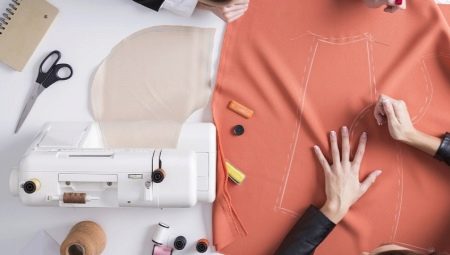Features of the cutter profession

Among a wide variety of professions, there is such - cutter... In this article, we will take a closer look at the main responsibilities and characteristics of this specialty.
Description of the profession
What is the profession of a cutter? it a specialist who is engaged in cutting material for further sewing, working in one of several directions of sewing production. In the case of working in a tailoring atelier, a clothing cutter advises the client in the selection of a suitable style and fabric. Then he makes sketches of the selected option, takes measurements, creates a pattern for them, and later makes cutting out the material.
The prepared material is transferred to the seamstress, who, after having baited the parts on a thread, sews them on a sewing machine. In the process of fulfilling the order, the cutter periodically meets with the customer to carry out fittings, since it will be necessary to adjust the product according to the figure, eliminate shortcomings.
Also, this specialist controls the level of quality of the work performed by the seamstress.

In some cases, all work, including cutting and sewing, is performed by one specialist - cutter-tailor (seamstress-cutter). Such professionals in most cases work with fashion designers to create new designs of clothing. Cutter-fashion designer must know the history of the costume, modern trends in world fashion. With various skills, this specialist can perform the functions cutter-designer.
Working in a factory where clothing, footwear or other accessories are mass-produced, the cutter creates and applies patterns for cutting the material... Later, the workpieces are transferred to the masters of various departments for further sewing. This specialty, like others, has its pros and cons. Let's consider them in more detail.
Pros:
- relevance under any conditions;
- the opportunity to work on an individual basis;
- artistic approach to creating clothes or shoes;
- active communication and work both with one person (client) and in a team;
- the opportunity to work for people with disabilities;
- the possibility of receiving a high salary.
Minuses:
- too strong physical activity;
- the likelihood of conflict moments;
- possible improvements if the order is urgent.

Responsibilities
Job description of this specialist depends on the assigned category according to ETKS. In the general competence of a sewing cutter 4 digits includes functions for cutting and sewing bed linen. Masters with 5 rank, can work out blanks for dresses, suits, coats according to ready-made sketches. Specialist with 6 digit able to deal with industrial clothing. Cutter having 7 rank, works with more sophisticated clothing options with non-standard styling.
Knowledge and skills
To perform quality work, the cutter must have the following knowledge:
- understand the characteristics of materials;
- be able to work with a special tool;
- be able to draw well and draw patterns;
- be neat, diligent, attentive to details;
- must know the characteristics and rules of operation of sewing equipment.
The following skills are also required:
- drawing (for sketching and sketching);
- drawing (to be able to read and create patterns and patterns);
- possession of cutting techniques;
- use of certain professional tools;
- modeling of textile products of different directions;
- the ability to work with fabrics of various textures;
- possession of good visual memory.
At those enterprises where underwear, suits, various outerwear are sewn, a necessary skill is confident work with a certain type of product.

Education
In order to get the profession of a cutter, it is enough to undergo training at the end of the 9th or 11th grade of a general education school. in a college, school or higher education institution with this direction of training. The term of study is 2-3 years, depending on how many classes the applicant will come to. Before receiving the appropriate diploma, you will need to undergo an internship under the guidance of an experienced teacher. It is also possible to pass special courses on cutting and sewing.
Workplace
A cutter is necessary not only in sewing enterprises, but also in the production of stretch ceilings, where the cutting of the canvas is also required. Regardless of where the cutting specialist performs his functions: in the workshop, in the workshop of a garment factory or in an atelier, in the working area it is necessary to have:
- bright lighting;
- a special table for cutting fabric, leather or any other material;
- the necessary tool (scissors, chalk, pens, pencils, measuring instruments).
If the foreman has health restrictions, working conditions must correspond to the rehabilitation program. The cutter's salary at the enterprise depends on the region, place of work and some other nuances and ranges from 15,000-100,000 rubles.
When choosing this specialty, it should be borne in mind that there are some contraindications to this profession. Here is some of them:
- diseases related to the respiratory system;
- diseases of the cardiovascular system;
- problems in the field of the musculoskeletal system;
- trauma or injury to the upper limbs;
- deviations in the work of the nervous system;
- diseases of the organs of vision.
Now, having become better acquainted with the characteristics of the cutter's profession and making sure that there are no limiting moments for acquiring this specialty, it will be easier to make your choice.









